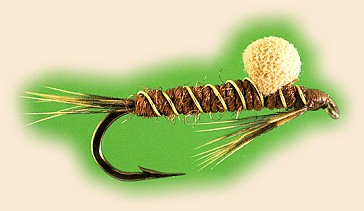Though this design lacks the buoyance of the Goddard/Clarke Suspender
Midge Pupa, it is easy to tie with readily available materials. Like
all Charles Brooks patterns, this is a simple, no-nonsense fly that
catches trout. It can be adapted to match a variety of mayfly species.
Materials for the Natant Nylon Nymph:
Originator: Charles Brooks.
Hook: 2XL dry-fly hook, #8 - #18.
Thread: Brown 8/0.
Tail: Mottled brown hen hackle.
Body: Brown wool yarn.
Ribbing: Gold wire.
Suspender pod: Ball of tan poly dubbing wrapped in
nylon stocking mesh.
Legs: Mottled brown hen hackle.
Tying Instruction for the Natant Nylon Nymph:
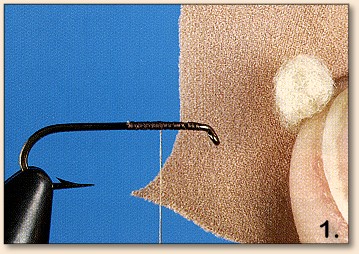
Step 1: Wrap a thread foundation over the front half of the
hook shank, and position the thread 1/4 of a shank-length
behind the eye. Roll a pinch of poly dubbing between thumb
and forefinger to produce a firm, but not tightly compressed,
ball about 1/2 the hook gap in diameter. Center the ball in a
square of nylon stocking material.

Step 2: Draw the stocking material around the dubbing to
form a pouch. Don't compress the dubbing too tightly
inside the nylon or the buoyancy of the suspender pod
will be reduced. Mount the suspender pod as shown...
Wrap the thread to the tailing point.

Step 3: Align and strip a bundle of hackle fibers. Mount
them atop the shank to form a tail about one hook-gap
in length. Secure the ribbing atop the tail-mounting wraps.
Tie in a length of wool yarn atop the rib-mounting wraps.
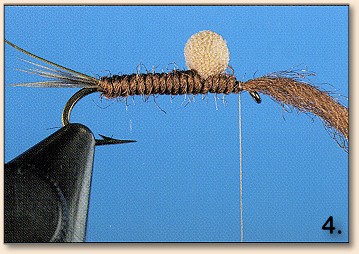
Step 4: Twist the yarn tightly (clockwise when viewed from above), and
wrap forward to produce a segmented body. Wrap the yarn to the rear
base of the nylon, then under the pod, and continue wrapping
ahead of the pod. Stop about 6-7 thread-wraps' distance behind
the hook eye. Tie off and clip the yarn.
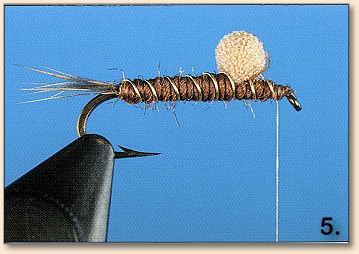
Step 5: Counter-rib the entire length of the body.
Secure and clip the ribbing at the front of the
yarn.
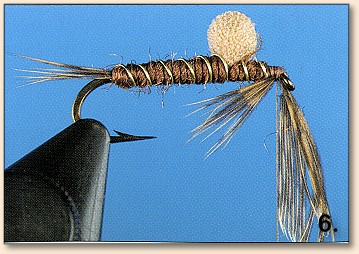
Step 6: Mount the legs...Bind and clip the excess.
Form the head of the fly and whip finish.
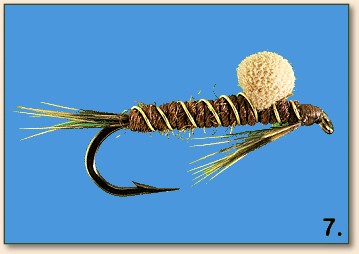
Finished fly. ~Jim Schollmeyer and Ted Leeson
Credits: The Natant Nylon Nymph is from
Tying Emergers, published by Frank Amato
Publications, (2004). The variety and number of nymphs
is mind boggling. Everything you ever wanted to know about
nymphs and how to tie them is in it. ~ DLB

